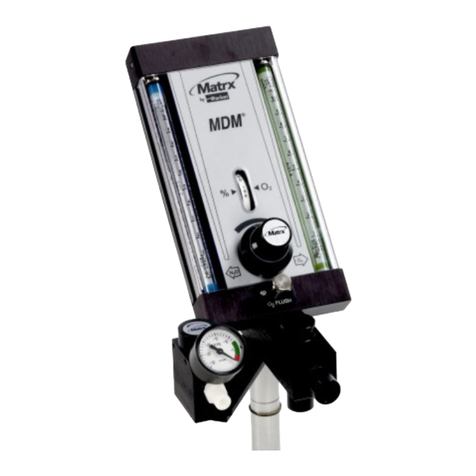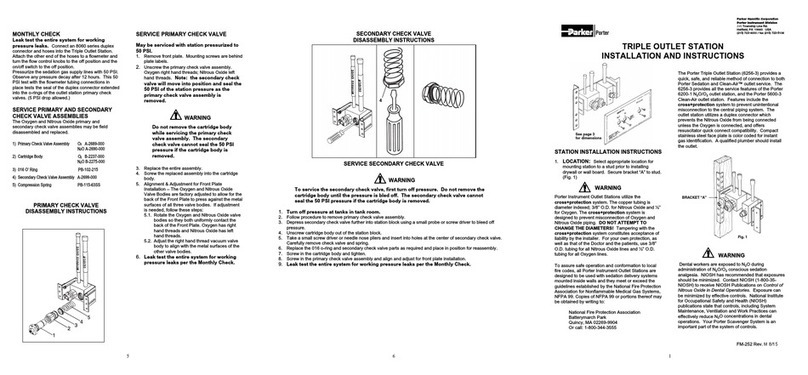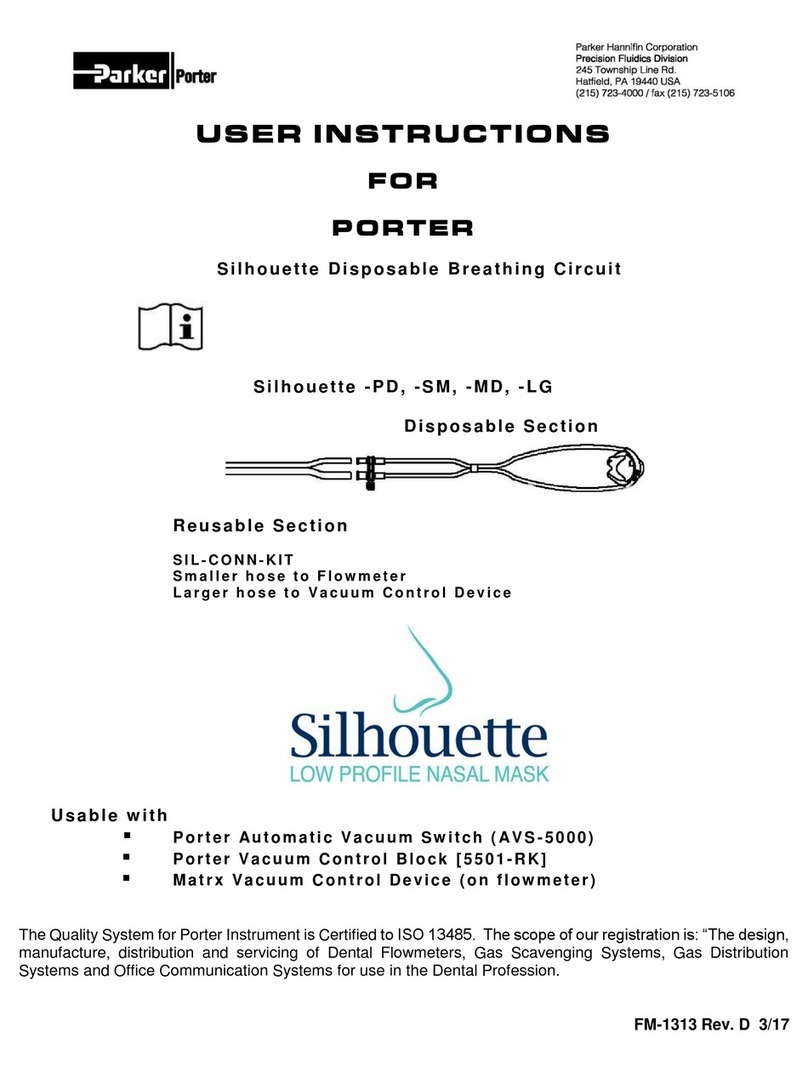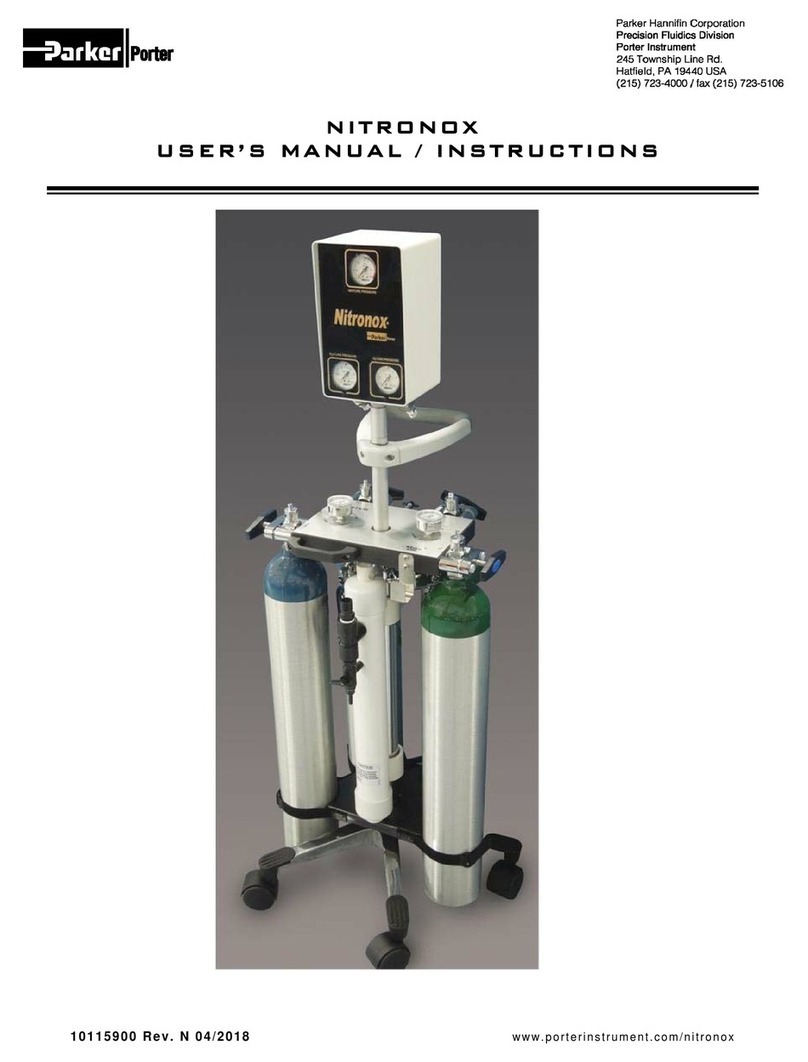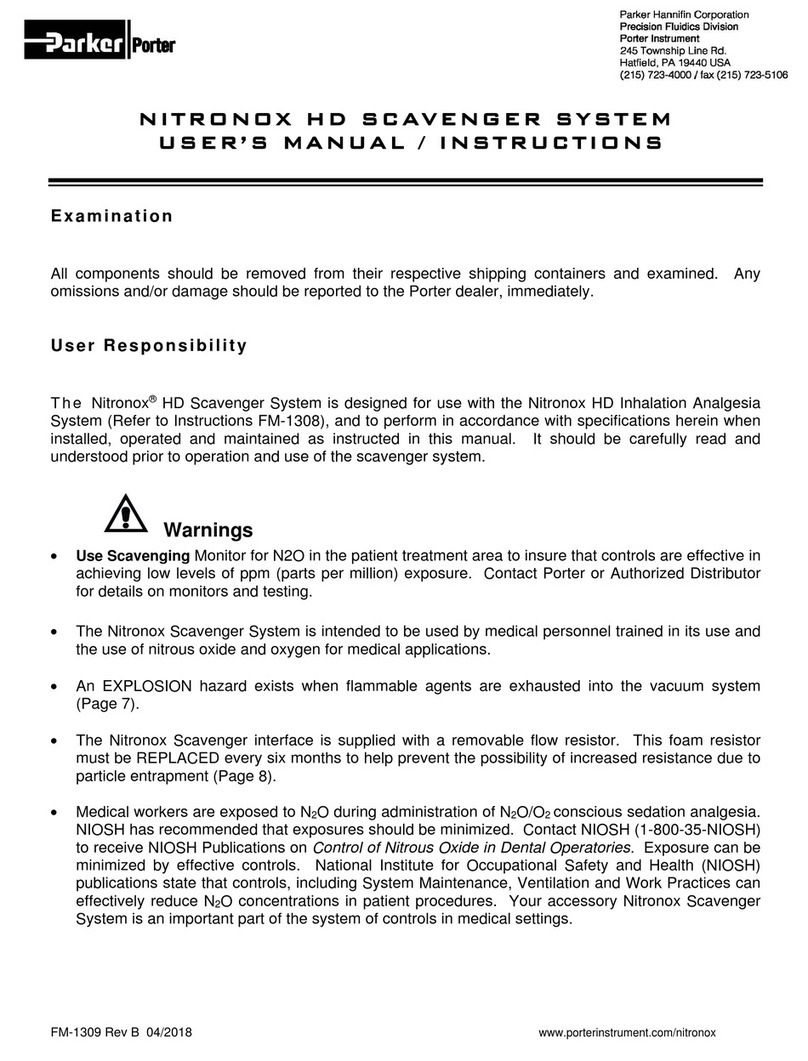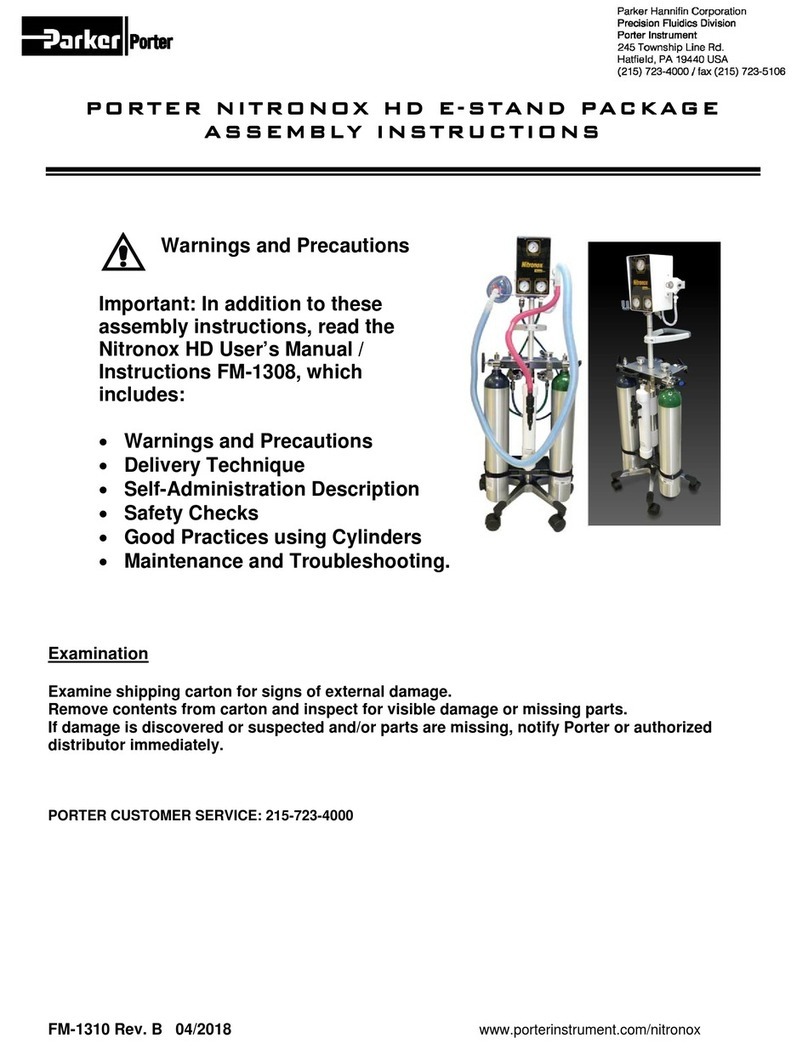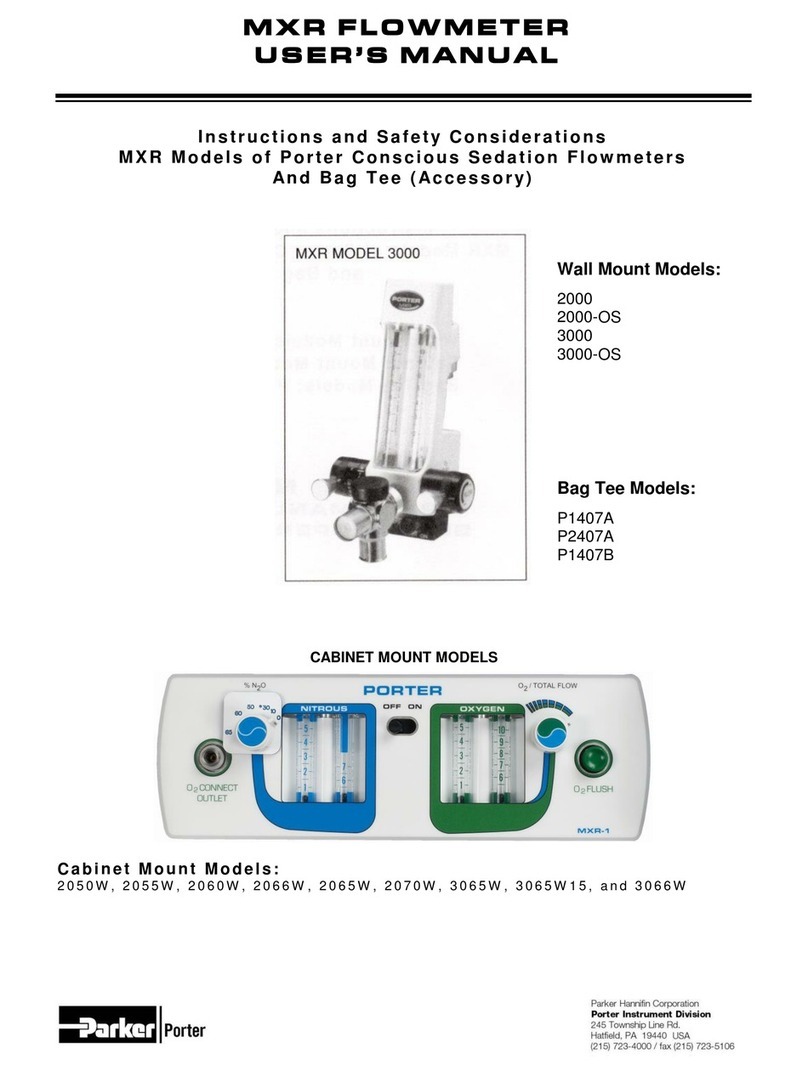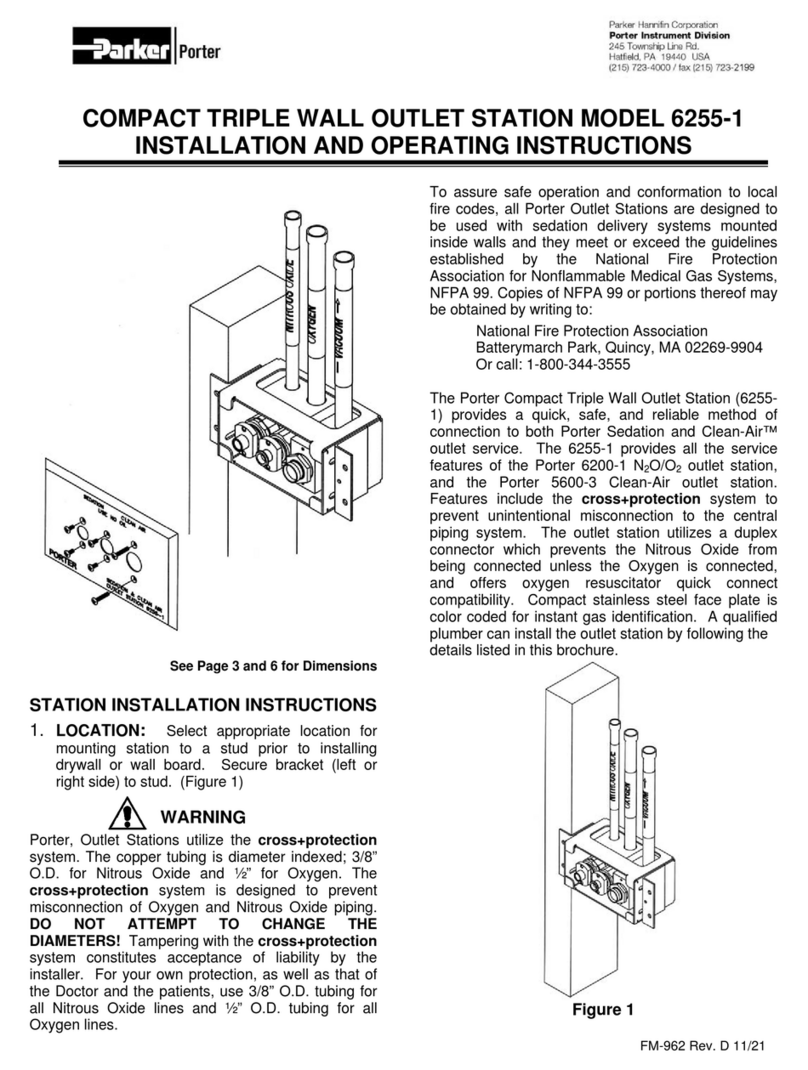
6
Cylinder (Tank) Operation / Maintenance
Cylinder Pressure Readings: Oxygen is a true
compressed gas, while in the cylinder, thus the
cylinder pressure gauge can be used to determine
the amount of gas remaining in the cylinder. For
example, 2000 psi indicates full, 1000 psi indicates
half full, etc. Nitrous Oxide is a liquefied compressed
gas that vaporizes in the cylinder, thus the cylinder
pressure gauge cannot be used to determine the
amount of gas remaining in the cylinder until all liquid
in the cylinder vaporizes. While liquid remains in the
cylinder, the cylinder pressure gauge indicates the
vapor pressure which depends on and varies with the
temperature of the liquid. For example, at 68ºF, the
vapor pressure is about 750 psi; at 20ºF, it drops to
about 400 psi; while at 90ºF, it increases to about
1000 psi. After all the liquid vaporizes, the pressure
will decrease normally as the gas is withdrawn, and
the cylinder pressure gauge can then be used to
determine the amount of gas remaining in the
cylinder.
Cautions
Always turn on CYLINDER VALVES slowly
and fully.
NEVER ATTEMPT TO LOOSEN cylinder valve
packing nut. If valve stem is tight, return
cylinder to supplier.
Warning: Do not remove or alter gas
indexing pins
Good Practices: Cylinders with E-Stand
1. Two cylinders of O2and two cylinders of N2O are
typically connected at all times.
2. Minimize leak risks: Confirm Yoke Washers are
in place before replacing/mounting cylinders. Use
Porter #A-3399-000 replacement washers
(once/yr.). Have spare washers.
3. Minimize leak risks: With cylinder in position,
rotate swivel arm and move into secure locked
position when Tee Handle is tightened. To
prevent movement and potential damage to yoke
pins, always fasten the Hook & Loop strap
restraints around cylinders.
4. Assure E-Stand is populated with at least one full
cylinder of O2and N2O before starting any
procedure.
5. Label each cylinder with a tag or sticker
indicating “In-Use” and “Full” (“Full” is reserve).
6. Use Cylinder Valve Wrench to open the “In-Use”
cylinders of O2and N2O. Verify wrench is
attached to E-Block.
7. Cylinder pressure gages on E-Block provide a
visual indication of cylinder status (see details on
Cylinder Pressure Readings)
8. Caution: If all four cylinders (or both cylinders of
one gas) are open, the two cylinders of O2and
N2O will deplete in tandem. The “Full” cylinder
will empty with the “In-Use” cylinder and will not
be available as a future spare.
9. When “In-Use” cylinder is depleted, open the
spare “Full” cylinder (Close valve on empty
cylinder).
10. When “In-Use” O2cylinder is depleted, the
Oxygen Fail Safe will stop N2O flow through
flowmeter automatically.
11. When “In-Use” N2O cylinder is depleted, the
flowmeter will deliver 100% O2.
After use, turn off cylinder valves.
Connect to Gas Supply
1. Connect O2hose to flowmeter.
2. Connect N2O hose to flowmeter.
3. Connect hoses to O2/ N2O outlet fittings on
regulators. (Figure 1)
Connecting Breathing Circuits
Refer to FM-809 for User Instructions for Assembly
Installation and Cleaning of Porter Scavenger Rubber
Goods System. Also for attachment of AVS
(Automatic Vacuum Switch) and Bag Tee (with Quick
Disconnect).
Refer to FM-1330 for Assembly and Installation of
Medical Breathing Circuit Scavenger System for
medical applications.
Monthly Check
Leak test the entire system for working pressure
leaks. Attach the hoses to a flowmeter and turn the
flow control knobs to the OFF position and the ON /
OFF switch to the OFF position.
Turn tanks ON. Pressurize the sedation gas supply
lines and “E” block with tank pressure. Turn tanks
OFF. Apply masking tape to both gage faces. Tap
lightly on gages and mark gage needle positions on
the masking tape. There should be little or no
movement of the gage needles after 15 minutes.
This test with the flowmeter tubing connections in
place tests the seal of the hose connectors, the “E”
Block and the flowmeter’s on / off switch.
